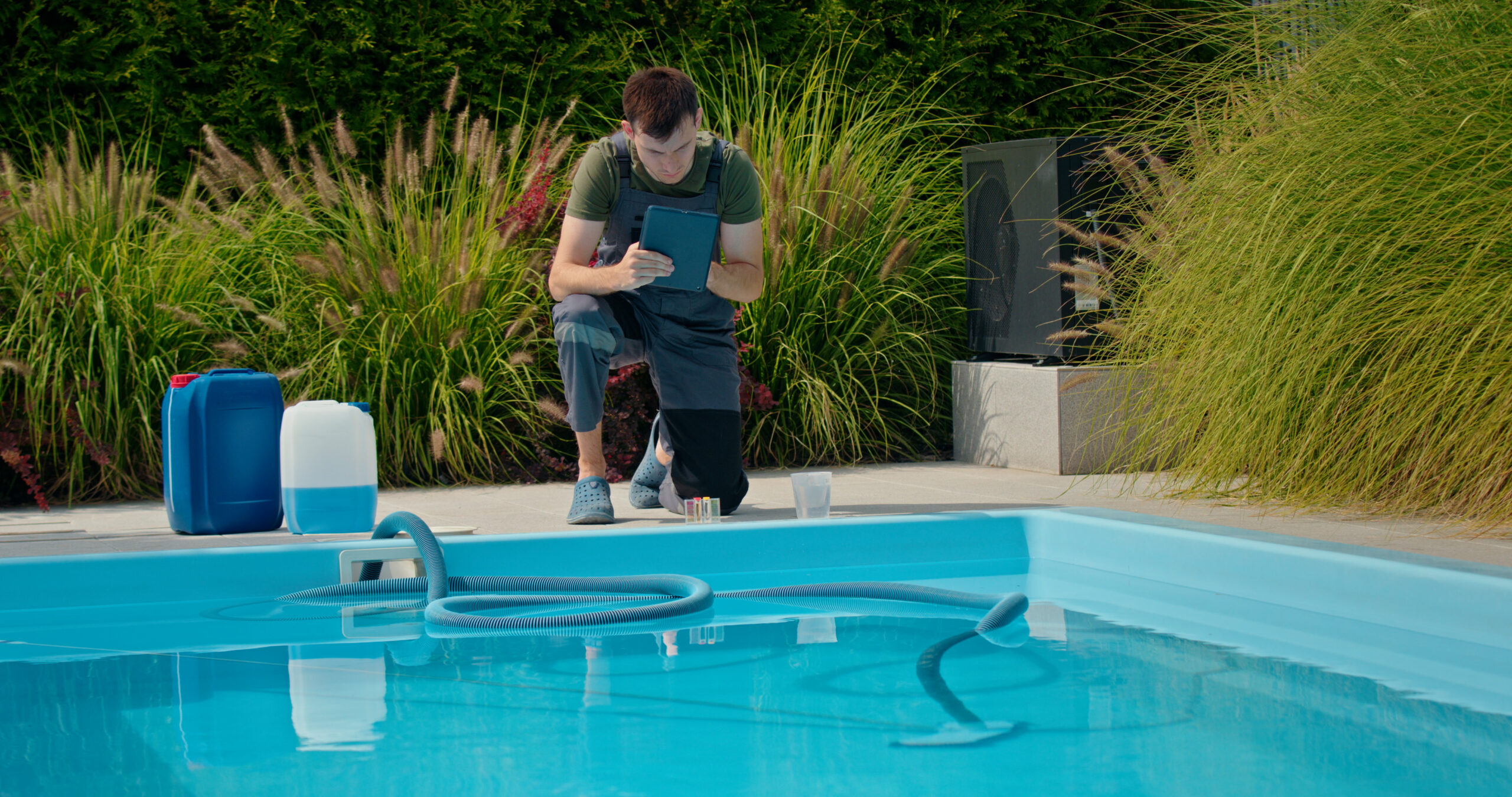Keeping your pool water properly balanced is essential for maintaining clear, clean water that is safe to swim in. Testing your water regularly helps you prevent issues like algae growth, cloudy water, or damage to pool surfaces and equipment. While pool test kits provide the most precise results, there are also alternative ways to test your pool without one. This guide will explain both methods in detail, helping you understand what to test for and how to interpret the results.
Why Testing Your Pool Water Matters
Maintaining balanced pool water isn’t just about keeping it looking good; it plays a critical role in swimmer safety and the longevity of your pool. When pool chemicals are too high or too low, problems can arise:
- High chlorine levels can cause eye and skin irritation.
- Low chlorine levels can allow bacteria and algae to grow.
- Improper pH can damage pool surfaces, irritate swimmers, and make chlorine less effective.
- High calcium hardness can cause scaling on pool surfaces and equipment.
- Unbalanced alkalinity can lead to rapid pH fluctuations.
To keep your pool in good condition, testing should be done at least once a week, though more frequent checks may be necessary during periods of heavy use, rain, or high temperatures.
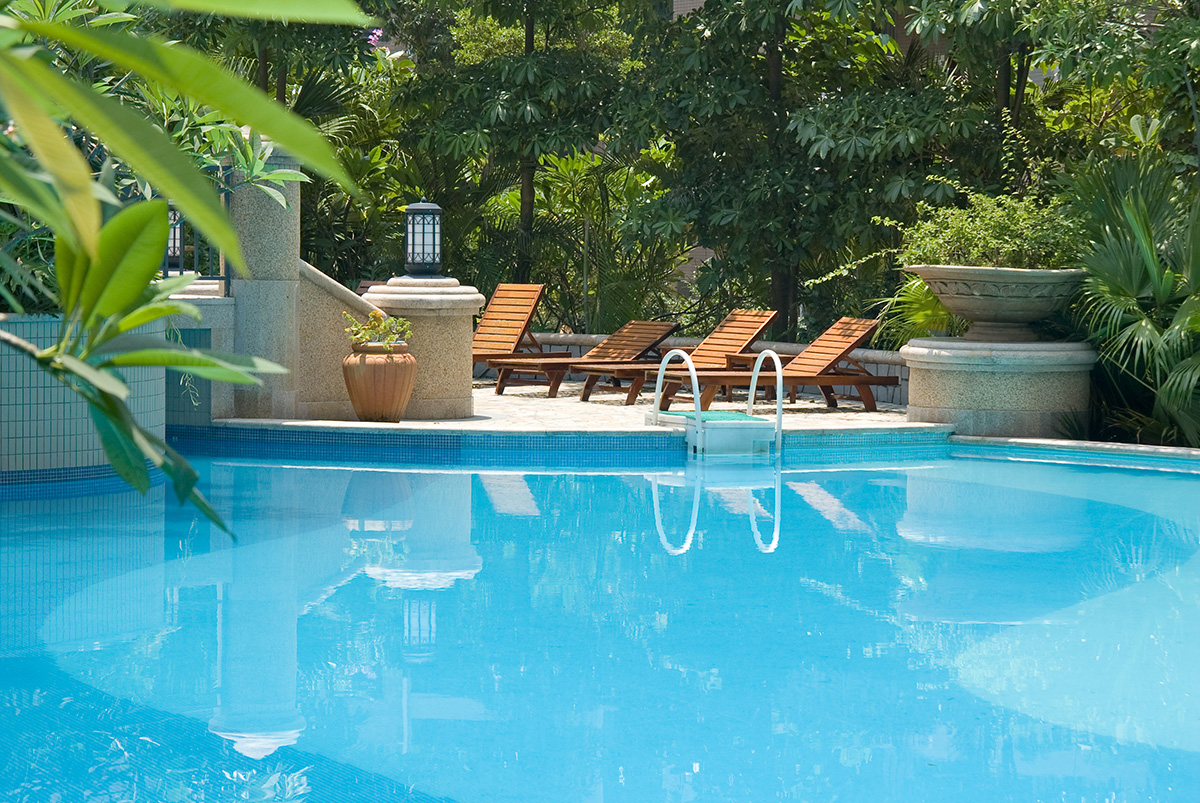
Testing Pool Water With a Kit
Pool test kits are the most accurate way to check water chemistry. These kits typically test for chlorine, pH, alkalinity, calcium hardness, and cyanuric acid (a stabilizer that helps chlorine last longer). There are two common types of test kits:
Test strips – These are paper strips coated with chemicals that react to different pool water conditions. Simply dip the strip into the water, wait a few seconds, and compare the colors to a reference chart.
Liquid reagent kits – These kits use liquid chemicals to create color changes in test samples. Water is collected in a test tube, and drops of reagents are added. The resulting color is compared to a chart to determine chemical levels.
Steps to Test Your Pool Water With a Kit
- Collect a water sample – Use a clean plastic or glass container to gather water from about 12 to 18 inches below the surface. Avoid collecting water near return jets or skimmers.
- Follow test instructions – Whether using strips or liquid reagents, follow the manufacturer’s instructions carefully.
- Compare results to recommended levels:
- Chlorine: 1-3 ppm (parts per million)
- pH: 7.2-7.8
- Total alkalinity: 80-120 ppm
- Calcium hardness: 200-400 ppm
- Cyanuric acid: 30-50 ppm (for outdoor pools)
- Adjust chemicals as needed – Based on your test results, add the necessary chemicals to balance your pool water.
- Retest after adjustments – Wait several hours or until the next day to retest and confirm that adjustments were effective.
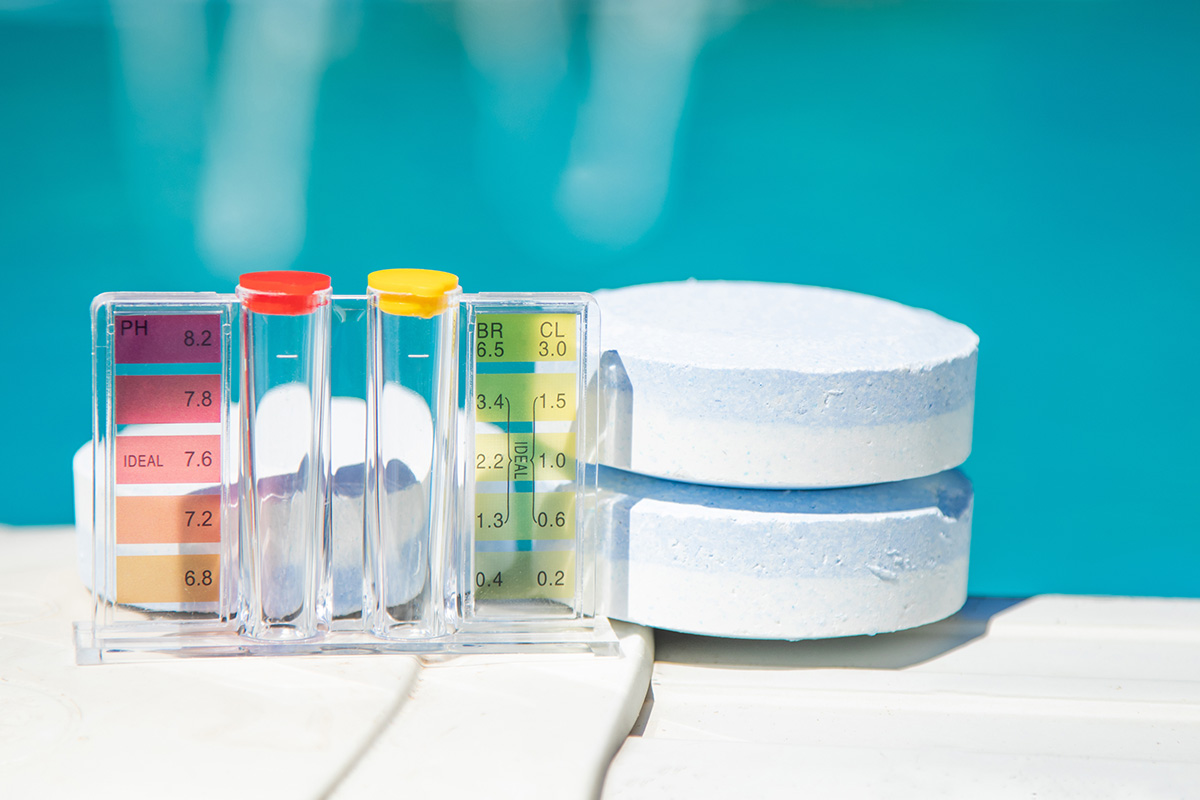
Testing Pool Water Without a Kit
If you don’t have a pool test kit on hand, there are a few alternative methods you can use. While they aren’t as precise, they can still give you an idea of whether your pool water is balanced.
The DIY Household Methods
- Testing pH with Vinegar and Baking Soda
- Take a small sample of pool water and add a few drops of vinegar. If you see bubbles or fizzing, the water is likely too alkaline (high pH).
- Add a pinch of baking soda to another sample of pool water. If it fizzes, your pool water is likely too acidic (low pH).
- This test won’t give you an exact number, but it can help determine if pH adjustments are needed.
- Checking Chlorine With a DPD Indicator Alternative
- If you have hydrogen peroxide at home, add a small amount to a water sample. If you see bubbles or foam, it may indicate the presence of chlorine.
- Another trick is to dip a white cloth in pool water and see if it becomes discolored after drying. A yellowish stain could indicate high chlorine levels.
- Observing Pool Water Clarity and Smell
- A strong chlorine smell doesn’t mean there’s too much chlorine—it often means there are too many chloramines (a sign that chlorine isn’t effectively sanitizing).
- If the water looks cloudy or has visible algae, chlorine levels may be too low.
- The Lather Test for Alkalinity
- Fill a clear bottle halfway with pool water and add a few drops of liquid dish soap. Shake it and observe whether it lathers.
- If it lathers easily, alkalinity may be low. If there’s no lather but cloudy water, alkalinity might be high.
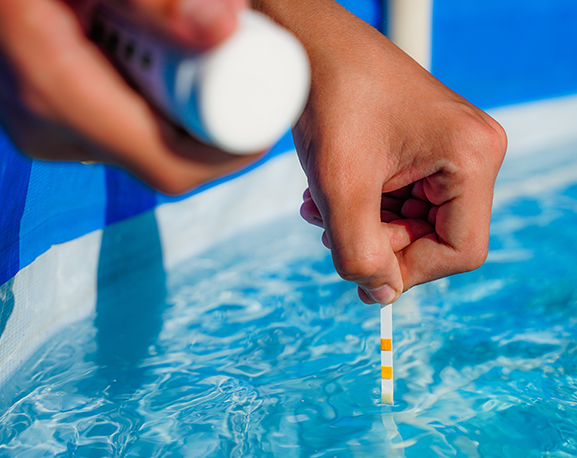
Professional Pool Testing
If you want highly accurate results but don’t have a kit, consider taking a sample to a local pool store. Many pool supply stores offer complimentary water testing services using specialized electronic equipment that provides precise readings. These tests typically measure chlorine, pH, alkalinity, calcium hardness, and cyanuric acid, sometimes offering additional insights such as total dissolved solids and metals like copper or iron. Store technicians can interpret the results and suggest specific chemical treatments to balance your pool. To ensure the most accurate reading, collect your sample from the middle of the pool, about 12 to 18 inches below the surface, using a clean plastic or glass container. Transport the sample to the store as soon as possible to prevent temperature changes or contamination from affecting the results.
Professional testing is particularly useful when dealing with persistent issues such as cloudy water, algae blooms, or fluctuating pH levels, as it provides a deeper analysis than most home testing kits. In areas like Las Vegas, where the extreme heat and hard water can make pool maintenance more challenging, professional testing becomes even more important. High evaporation rates in the desert climate can lead to increased mineral buildup, which affects water chemistry and requires frequent monitoring.
For those in the Las Vegas area, companies like Big League Pool Cleaners offer in-depth water testing services along with expert guidance on maintaining chemical balance. Their experience in handling the unique pool care needs of the region makes them a valuable resource for local pool owners looking to keep their water in top condition.
Keeping Your Pool Balanced
Regular testing is key to a well-maintained pool. Using a reliable test kit is the best approach, but alternative methods can help in a pinch. However, relying on alternative testing too frequently can lead to inaccurate chemical levels, which may cause long-term damage to pool surfaces and equipment. Ensuring proper chlorine, pH, and alkalinity balance not only keeps the water looking clear but also prevents the buildup of harmful bacteria and algae that can make swimming unsafe. Additionally, unbalanced water chemistry can result in scale formation, corrosion, or etching of pool materials, all of which can be costly to repair over time.
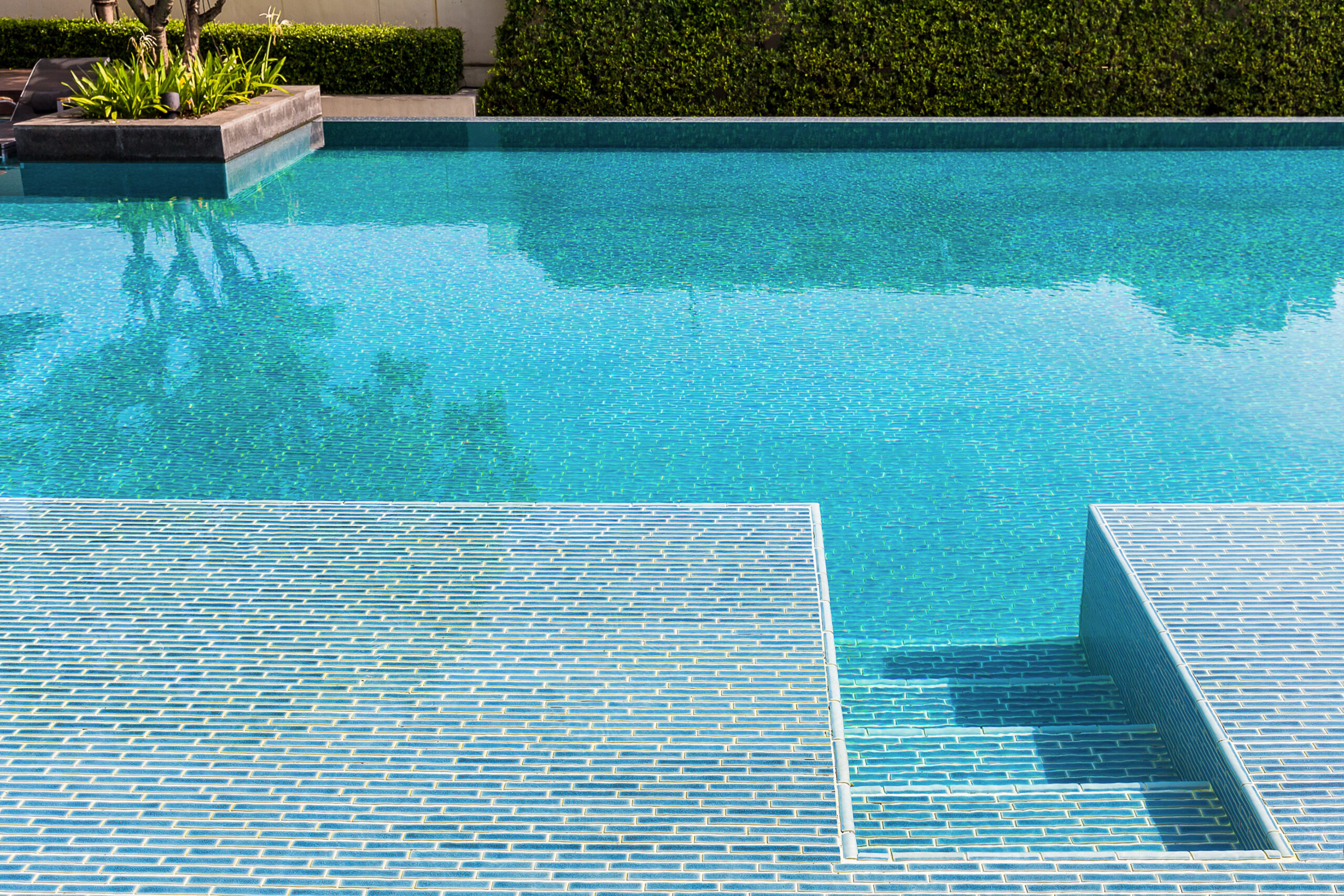
For those unsure about their test results or experiencing persistent water quality issues, seeking professional water testing services is a smart choice. Professionals can provide a more thorough assessment and recommend specific chemical adjustments tailored to your pool’s conditions. In Las Vegas, where the combination of high temperatures and hard water can lead to complex variation, consistent testing is especially crucial. Local pool owners often find that maintaining proper water chemistry requires more frequent monitoring due to these regional factors.
Big League Pool Cleaners, a trusted name in Las Vegas, offers comprehensive pool water testing and expert advice to help homeowners manage these challenges effectively. Their knowledge of local water conditions makes them a valuable resource for ensuring pools stay in top shape year-round. If you need expert assistance with testing and maintaining your pool’s water chemistry, contact us today to ensure your pool stays clean, safe, and properly balanced.

